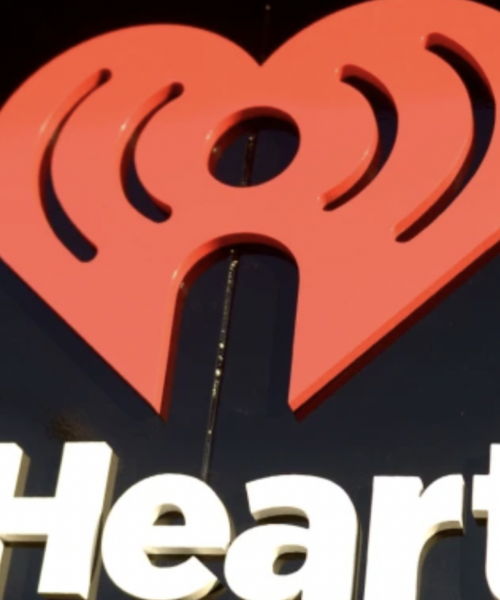BY TRILBY BERESFORD | HollywoodReporter.Com
Troy Warren for CNT #Digital
Jon M. Gibson and Amanda White’s Echo Park-based production company, which has inked partnerships with studios and gaming giants, is building its brand on unique collectors items and community events.
“It’s kind of fascinating because most people know iam8bit for one thing and not all the other things, like everyone usually has a relationship with us in some way.” That’s Jon M. Gibson, who founded the Echo Park-headquartered pop culture production outfit in 2005.
The company produces physical editions of games and puts out vinyl soundtracks, but also makes collectables and collector’s editions. There’s a real-life art gallery that began by reinterpreting worlds and characters from classic 8-bit video games, and a work-for-hire side of the business that produces animation, trailers and commercials, expands the mythology of brands and intellectual property and designs community events and escape rooms.
Collaborations have included a project with Twentieth Century Fox and James Cameron’s Lightstorm to create an experiential Alita: Battle Angel-themed encounter that opened in three U.S. locations simultaneously, and an outing with Nintendo to transform one of their conference rooms in San Francisco into a Zelda-themed portal for the 25th anniversary of The Legend of Zelda. Among distribution partners is Skybound Games, for the physical release of indie hit Spiritfarer. That’s a lot of things.
Tangible things are, in fact, the backbone of the whole operation. “We don’t believe in putting stuff out in the world just to put it out there,” Gibson tells The Hollywood Reporter. “We don’t believe in junk. We want things to beautify your life. We want to give you artifacts that you can put on your mantle and feel really good and proud about displaying in your home, versus crap that’s in a box because it was cheap to make.” Something shouldn’t need to exist unless it’s going to bolster something, he emphasizes.

To understand more of what iam8bit is and how it achieves this bolstering, one has to revisit the landscape before it all began: pre-2005. Gibson was working as a video game and technology journalist, “everything from LA Weekly to Vanity Fair and Maxim,” he recalls. But he had a clearly defined obsession, even at that early time: games culture. Specifically, Gibson says he was interested in the idea of games influencing the lifestyle of gamers, versus the typical game reviews and previews that characterized gaming journalism. “Back then there wasn’t a lot of room for it, those stories were harder to find,” says Gibson.
In Los Angeles, Gibson started writing for animated television shows, which is where he met many artists all in the early-20s age group. “They were all super nerds from that 80s gaming era,” he recalls, adding that they would have weekly game nights with modded Nintendo and Sega Genesis consoles and PC’s. Some of these nights turned into LAN parties at Warner Brothers: “After hours you’d see ethernet cables strung over cubicle walls … it was a pretty cool sight you don’t really see anymore.”
Around that time, an underground art scene was happening in L.A. that counter-acted the expensive gallery vibes typically seen in big capital cities. “There were underground scene warehouse parties basically, where you could just go and buy $20 paintings on the wall from young artists and those paintings are now worth thousands of dollars,” recalls Gibson. He seized an opportunity to take some of those artists and give them an assignment, a theme: retro video games.
He walked into a gallery that was about to go out of business and pitched them an idea of doing a show that was all about 80s video games with people re-interpreting familiar characters like Donkey Kong, Zelda, Sonic, Super Mario and more. “Through your minds eye, those games are really archaic and limited in capacity for what they can show you graphically,” says Gibson. The gallery space held a pop culture art show, which as Gibson says, are “a dime a dozen” these days. Iam8bit was among the early settlers.
And in these early stages of getting the company off the ground, Amanda White entered the picture and eventually became a co-owner in 2008. They had met on a hike, introduced by a mutual friend, the actor Daniel Franzese (Mean Girls) and hit it off. White’s background was in film production, she had worked her way up from being an assistant on Good Will Hunting to producing narrative features and documentaries. But something else besides the film business beckoned, and she began working on iam8bit’s projects with the mindset: “We can do this better, smarter, more efficient, more accountable.”
One of the first projects of Gibson and White was for Dead Rising 2 for Capcom, which led to the founding of iam8bit’s physical space. The pair located a venue in Echo Park with a landlord who was kind enough to let them knock a wall down between two spaces, and this allowed their vision to be executed. But that space also became their home, their permanent storefront that serves them through everything from shipping and receiving to marketing projects. “It’s the heart and center of our business,” says White.

Careful thought goes into what makes a game worth preserving in a physical edition or otherwise tangible item. For Gibson, it’s an attraction to unique perspectives, artistic styles and characters. “We’re very curated in our approach,” he says. “The idea of a tactile relationship with objects in general has always been, for us, the most important thing even outside of physical objects.”
In speaking about how cultural items have personal significance, White summons the book Be Here Now by Ram Dass. It’s about being present in the present moment, and when iam8bit gives people a “touchstone” — a physical object — they are attempting to engage them in that moment, viscerally and fully, as that person holds the thing, she explains. It’s another element of iam8bit’s philosophy.
As this philosophy became a reality, partner companies started calling because they were truly doing something unique, according to Gibson. (There are somewhat similar companies, such as digital storefront Humble Bundle or the numerous brands that create pop culture-themed merchandise, though iam8bit has a hybrid focus as a production studio.) “We kind of accidentally created this beast of a notion that it’s okay to interpret and expand mythology because it’s celebratory and it just goes to prove that these things are much more powerful and sentimental for people than we often give fans credit for.”
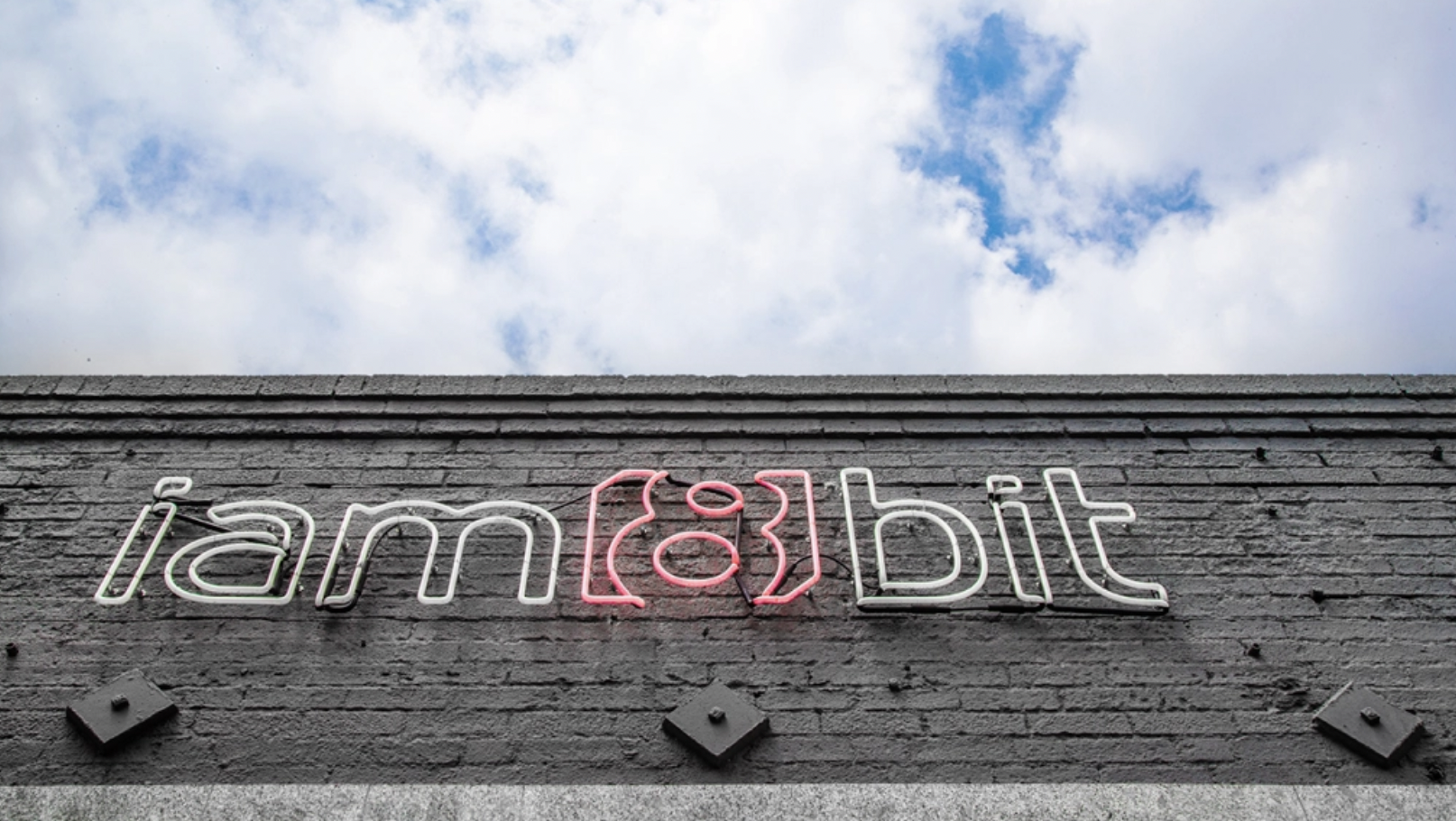
Through iam8bit’s collaboration with indie developer Thunder Lotus and partner Skybound Games, the company globally released standard physical editions for the cozy management simulation game Spiritfarer on PlayStation and Nintendo.
On Aug. 31, iam8bit released a collector’s edition — celebrating the one year anniversary of the game — which meant something extra to Gibson and White. “We’re very fond of the artistry,” says Gibson. “In video games in particular, it’s a very wacky choice to decide to hand draw every frame of animation because it’s a much more arduous a task, especially for an indie developer,” Gibson explains. He says he could really see the “soul” of the game on display from the very first frame of the trailer.
White explains that the game, which sees a ferrymaster character shuttle spirits of the deceased to the afterlife, spoke to them particularly in a year where many people in the world have been confronted with their own mortality amid the COVID-19 pandemic and also lost loved ones. Having the ability to say goodbye was part of the appeal.
To connect those ideas, White recalls that iam8bit included in its offerings a postcard set whereby people are encouraged to write a goodbye letter to someone and send it back to iam8bit. The company is planning a visual installation of all the postcards they receive, a project which White likens to the temple at Burning Man: “We’re accepting this energetic farewell from people and then releasing it out into the world in a way that is symbolic. We’re attempting to extend the ideas into a real life artwork manifestation.”
The team is also creating a replica of the Everlight symbol in the game, which is not ever seen close up. “We wanted to make that incarnate, something that you could actually have,” says Gibson. In Spiritfarer, he explains, when someone passes they become part of our universe, ascending to the heavens and becoming stars in the sky. Iam8bit’s installation will include a lantern, with each side featuring stars and constellations. “When you put the Everlight into the box, turn it on, and put that lantern in your mantle or your tabletop, it actually emits light and illuminates the constellations, and therefore represents, very spiritually, what Spiritfarer is all about.”
With this item and many others that iam8bit creates, the idea is not simply that the pieces signify an imaginative token of ephemera, or corporate insignia — both being phrases Gibson used — but rather an item that can stand on its own as a display. And yet nothing is just a display, as each piece inherently carries the story or sentiment of the game.
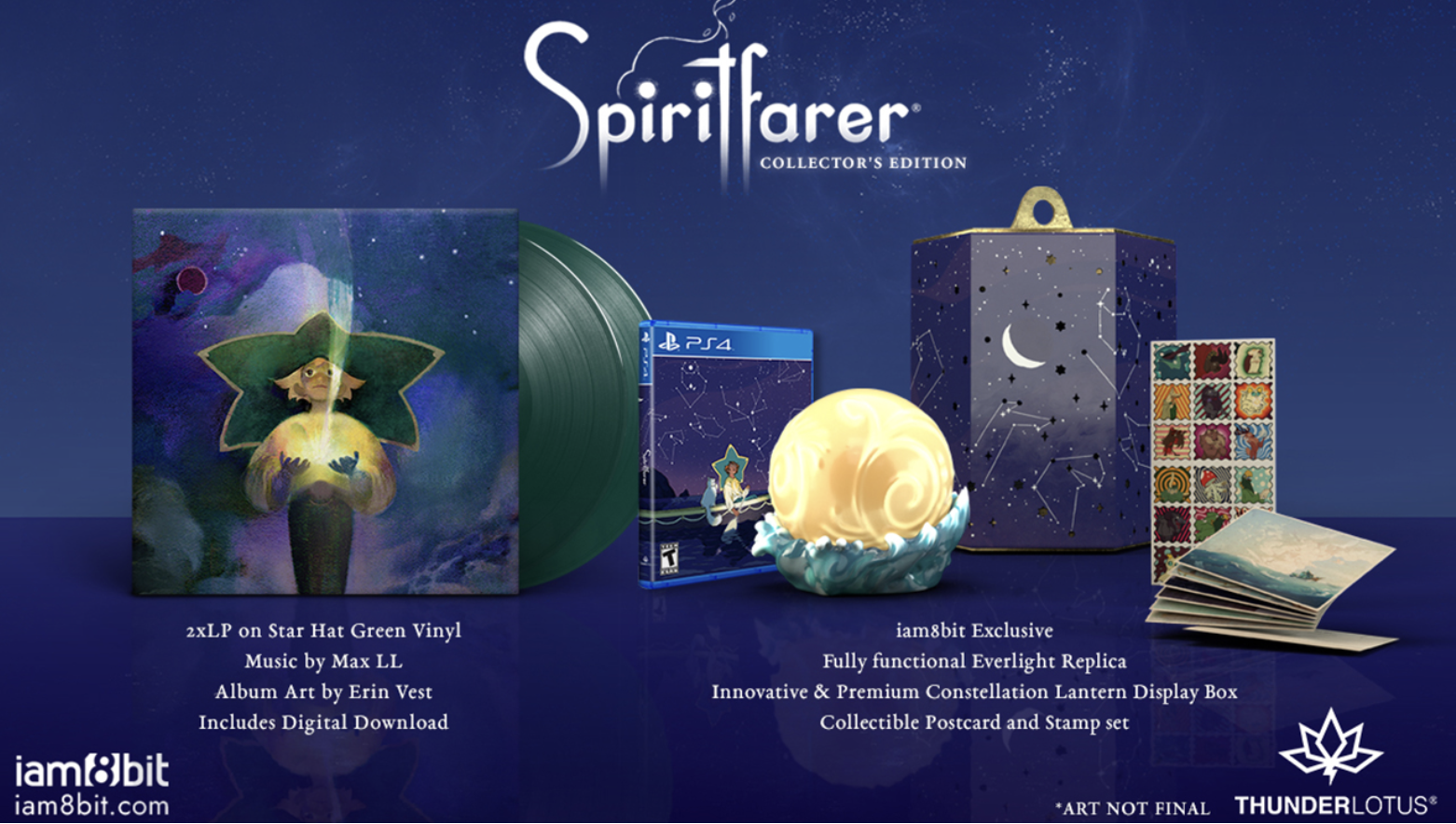
Another recent project was for Ori, which prompted a larger discussion about the celebratory elements beyond the games themselves. “We landed on this idea of a stained glass piece that would be the centerpiece of the collectors edition, but then we got into a conversation about how boxes also deserve to be part of that relationship,” recalls Gibson. He says that a box shouldn’t simply be the “vessel” that protects a shipment and is then thrown away, but rather it should have an experience in and of itself. The shell for Ori, Gibson describes, is akin to a perfume box and opens “elegantly” to reveal a “stained glass majesty.”
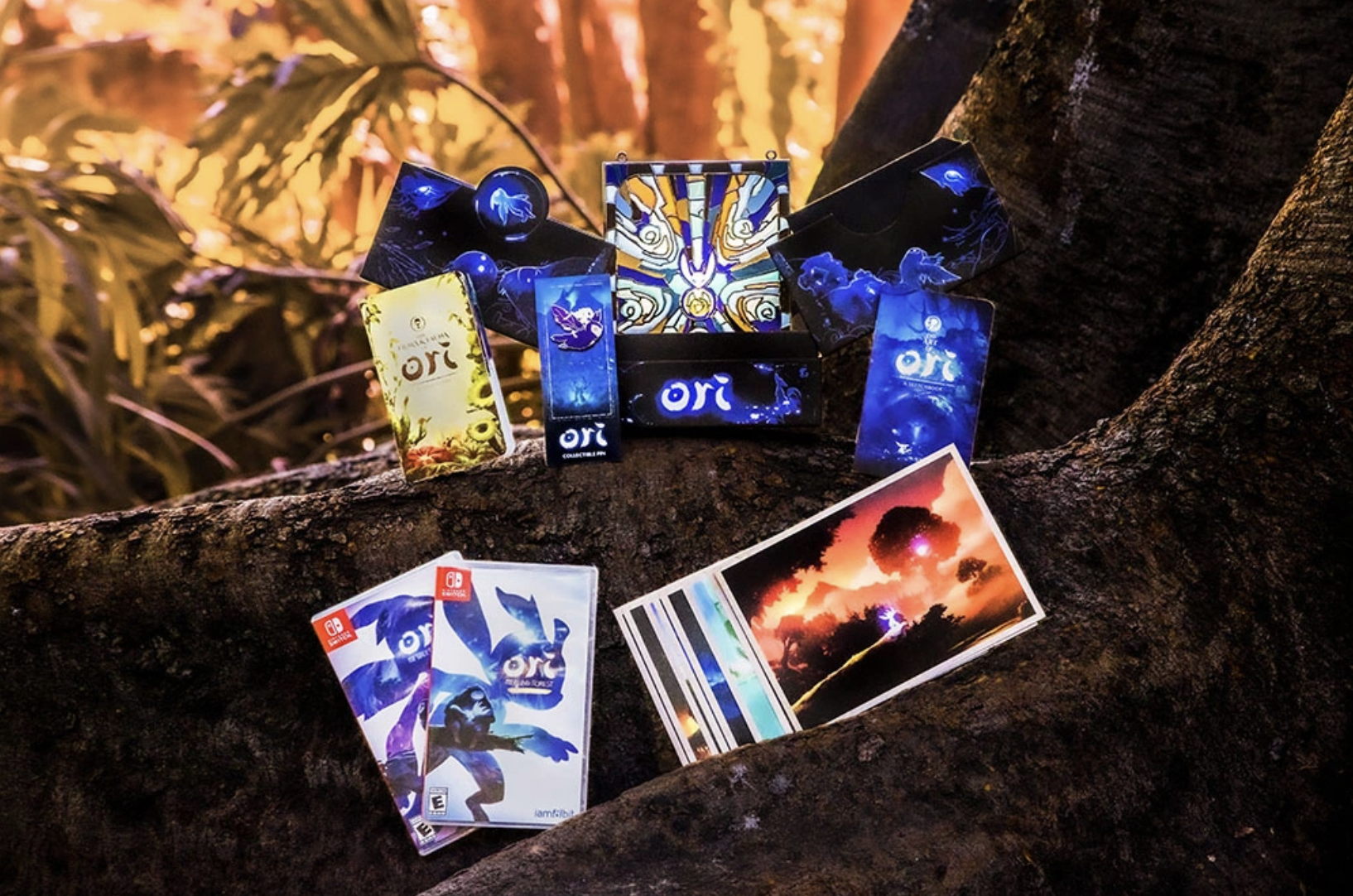
Elsewhere, a collectors edition for puzzle-platformer Inside was created. As White explains, the team had a notion they could create the central character from the game: “this blob of body parts that has some awkward mobility.” Noting that there was a rubbery nature to the character, they thought of using silicone — the material used to create real dolls. Err, sex dolls. They called the team at Real Doll in California, who actually knew of Inside and loved the game, and wanted to partner with iam8bit for the project.
“So Jon and I went down there to their factory and witnessed the silicone being mixed and dyed various colors,” White recalls. The result of their collaboration was a huddle silicone sculpture that now appears in a collectors edition alongside a postcard set and the physical game release, retailing for $375.
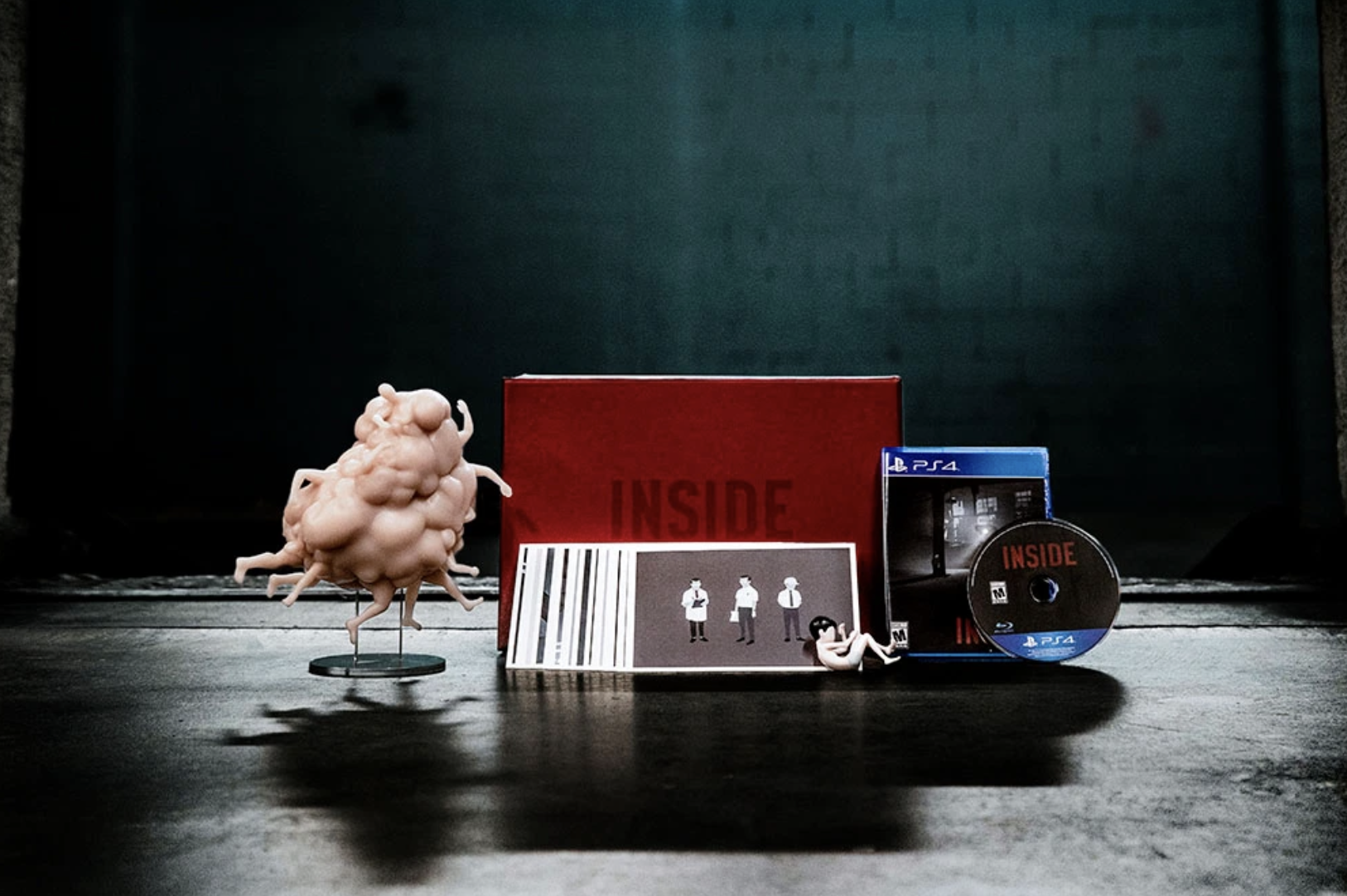
Looking ahead, Gibson does not see a universe where physical games and items will go away anytime soon. “You look at PlayStation 5 and the next-gen Xbox, both have disc-based systems,” he says, making an obvious but very important point. “Clearly they believe in the physicality of things.”
Gibson calls “digital distribution” the “buzzword” that everyone likes to talk about, but argues the opposite might be just as buzzy. “Because PlayStation and Xbox and Nintendo continue to invest in and support physical media, you have to look at the whole global landscape and understand that physical is a way that people consume things predominantly in certain sectors of the world.” He goes on to say that while people in metropolises like Los Angeles and New York have access to “wonderful internet” and “cyber networks,” a lot of people elsewhere still buy physical media at rapid rates.
“We can’t sit here and believe that, just because we’re digital people and we live in the cloud, that every other person in the world subscribes to that same notion,” Gibson says. While many have access to the latest technology, a lot of people are console generations behind.
In establishing the global reach necessary to sell hundreds of thousands of units (versus something like 5,000 or 10,000 units), Gibson recalls a partnership with Skybound Games as being integral to not only their personal goals — to align with “kindred spirits” who share similar values — but also their business strategy. He makes the point that this affects indie developers, too, as each territory in the world has their own mechanisms for distribution and their own retail stores that people shop at. For indie developers who previously couldn’t have sold high numbers of physical units without such a route, Gibson says these partnerships are a real revenue driver that is supporting their future.
“We talk about how people consume media, and selling several hundred thousand units of a game physically, literally means you’re introducing the game to several hundred thousand new players who are going to trade that game around,” says Gibson. “That’s going to live on for… years, if not decades as it gets passed around the used marketplace.”
As time goes on, Gibson and White plan to keep their core team (currently 22 employees) small as it works with game companies such as Annapurna Interactive (Sayonara Wild Hearts) and Double Fine (Psychonauts), while pursuing partnership, publishing and distribution opportunities to further grow the company. Like everything with iam8bit, it’s about making an experience, or changing it, or both. “Our ethos is driven by: ‘What would be really cool to do? Oh, that’s never been done before, well I guess we’ve got to fucking figure it out,” laughs Gibson.
In Other NEWS






























